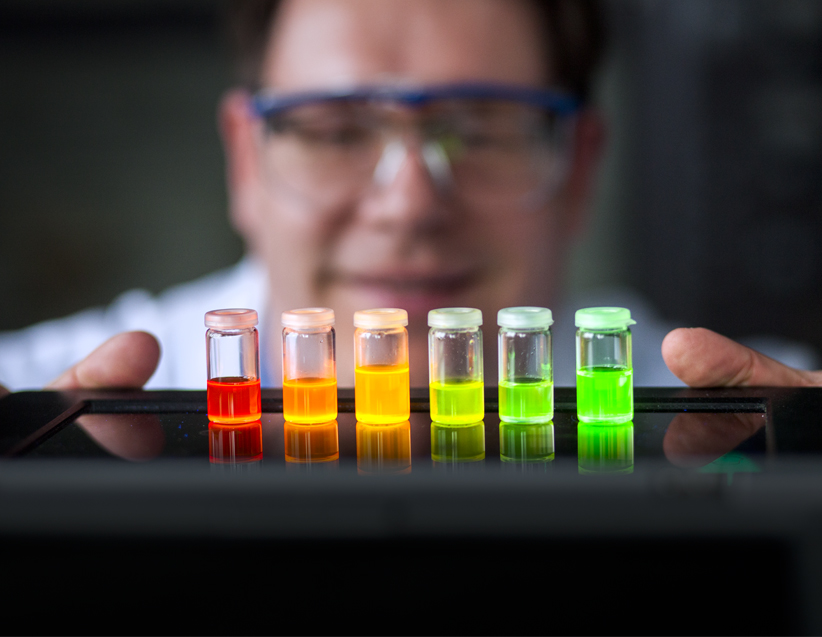BMBF project ELQ-LED for basic research on quantum materials as light sources
Researching New Highly Efficient OLEDs with Quantum Materials
"Exploring quantum materials - new ways to realize innovative optoelectronic components (ELQ-LED)" is the title of a joint project funded by the German Federal Ministry of Education and Research (BMBF) with 5.5 million euros. The aim of the project is to develop quantum materials for innovative applications in the display and lighting industries. The total budget of the project amounts to 9.1 million euros.
Basic research for light of the future
Modern light sources such as organic light-emitting diodes (OLEDs) must satisfy stringent requirements: high image quality and extremely slim, highly energy-efficient designs. With quantum materials as emitters, these advantages are now to be further exploited while simultaneously reducing costs and optimizing color spectra. The resulting innovative component utilizing the quantum materials is called an electroluminescent quantum materials-based light-emitting diode (ELQ-LED). Quantum materials feature even greater color intensity, which can be controlled by the particle size. The toxic metal cadmium is deliberately not being used in the development of materials in order to preserve the safety of OLEDs.
“ELQ-LEDs represent a systematic refinement of OLEDs and offer great potential for synergies between OLED and quantum materials,” says Michael Grund, Head of OLED and Quantum Materials at Merck.
Merck, OSRAM OLED, the Fraunhofer Institute for Applied Polymer Research, the University of Augsburg, Ludwig Maximilians University in Munich, and Carl von Ossietzky University of Oldenburg have joined forces as partners along the organic electronics value chain in order to demonstrate the basic applicability of quantum materials in lighting. In addition to conducting research on quantum materials, the partners plan to test and develop components, processes, matrix materials, transport materials, and inks following the comprehensive approach. All components are to be completely printable to save resources during production. The printed parts are being tested in display and automotive tail light demonstrators. The research project is scheduled to run for three years, ending in summer 2020.
More Information
Last modified:
